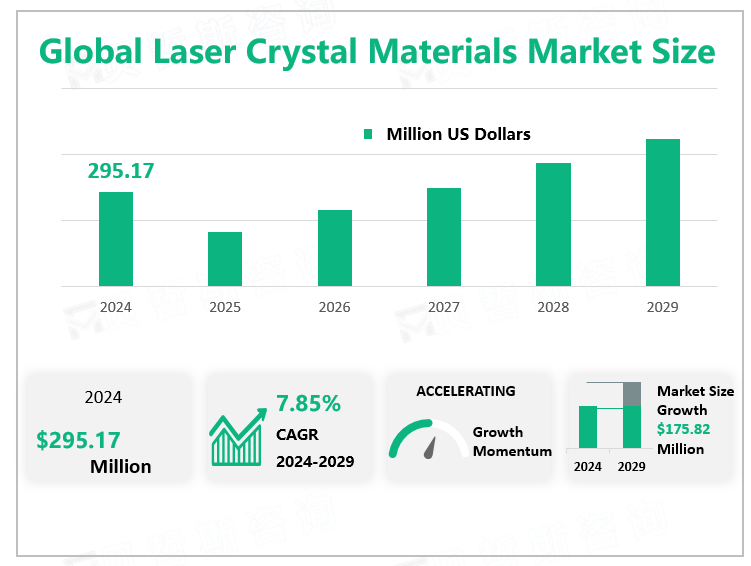Global Laser Crystal Materials Market Overview
According to Global Market Monitor, the global laser crystal materials market will be $295.17 million in 2024 with a CAGR of 7.85% from 2024 to 2029.
Laser crystal materials refer to the artificial crystal which can emit laser after stimulated radiation. Laser crystal components are one of the laser's working materials and core components in solid-state lasers. The laser crystal is composed of matrix crystal and activated ion. Matrix crystals mainly provide a suitable lattice field for activated ions (luminescent centers); the active ions are the lanthanide ions doped in the matrix crystals. The laser wavelength output by a solid-state laser depends on the active ions in the laser crystal. Different activation ions produce different wavelengths or different kinds of lasers.
Application Fields
So far, laser crystal materials with practical application value have been developed from several matrix materials to dozens of kinds, and have been applied in various industries, and the military laser market segment occupies the largest share. Looking at the type and application of laser crystal materials and the status quo and development prospects, the main development trends of laser crystals in the future mainly include the development of blue, green, purple, and visible light laser crystals for full-color display, optical storage, lithography, and other applications.

Market Drivers
In the development of lasers, materials often play a leading role. Today's achievements in laser technology are largely based on the research and growth of laser materials.
First of all, new materials have driven the development of ultrafast laser technology. Theoretical analysis shows that the shortest pulse width that the laser can generate is inversely proportional to the spectral width of the gain material, which is determined by the properties of the material.
Secondly, new materials have enriched the content of laser spectroscopy. In the first few years of the advent of lasers, due to the limited number of materials, only a handful of spectral lines can be obtained. After nearly forty years of unremitting efforts by scientists, there are currently only solid materials that can produce lasers. Nearly a hundred kinds of new materials have come out one after another, which has enriched the laser wavelength coverage to varying degrees. Although many laser materials are not mentioned much because they are no longer in common use at present, they have also played a role in the development of laser technology. Therefore, the research and development of laser crystal materials will receive more attention with the popularity of lasers.
|
Drivers |
Materials are the core factor in the development of laser technology. |
|
National funding and policy support from countries |
|
|
The downstream laser industry provides a stable demand market. |
|
|
With the optimization of product performance, the application field continues to expand. |
We provide more professional and intelligent market reports to complement your business decisions.